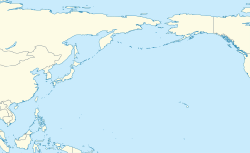| Mirim Airport Pyongyang East Airfield | |||||||
|---|---|---|---|---|---|---|---|
미림비행장 美林飛行場 Mirim bihaengjang Mirim pihaengjang | |||||||
| Site information | |||||||
| Type | Military airfield | ||||||
| Owner | Korean People's Army Air Force | ||||||
| Controlled by | Korean People's Army Air Force | ||||||
| Condition | used by ultralight aircraft only | ||||||
| Location | |||||||
| Coordinates | 39°0′35″N125°50′50″E / 39.00972°N 125.84722°E | ||||||
| Site history | |||||||
| Built | 1940s | ||||||
| Built by | Imperial Japanese Army Air Service | ||||||
| In use | 1940s–present | ||||||
| Materials | concrete | ||||||
| Airfield information | |||||||
| Elevation | 9 m (30 ft) AMSL | ||||||
| |||||||
Mirim Airport, also known as Pyongyang East Airfield or K-24 Air Base, is an airport in Mirim-dong, Sadong-guyok, Pyongyang-si, North Korea.



